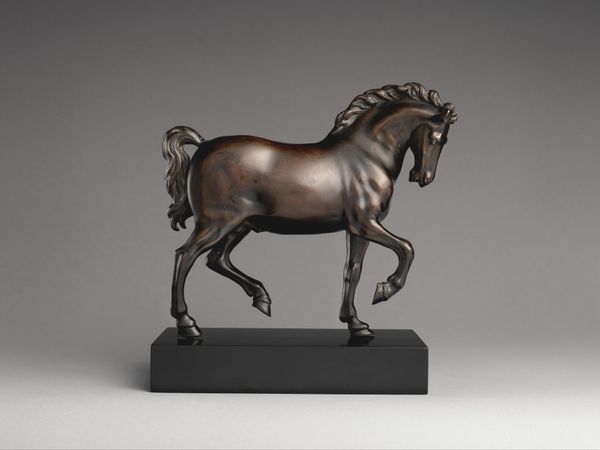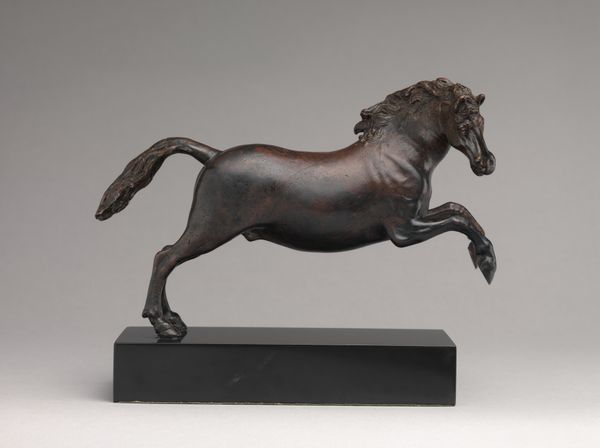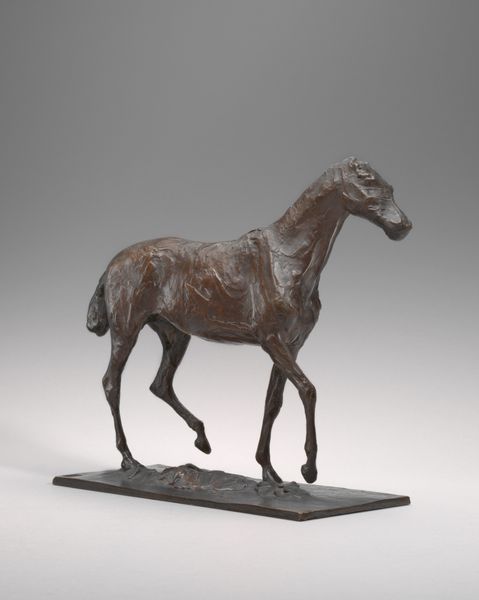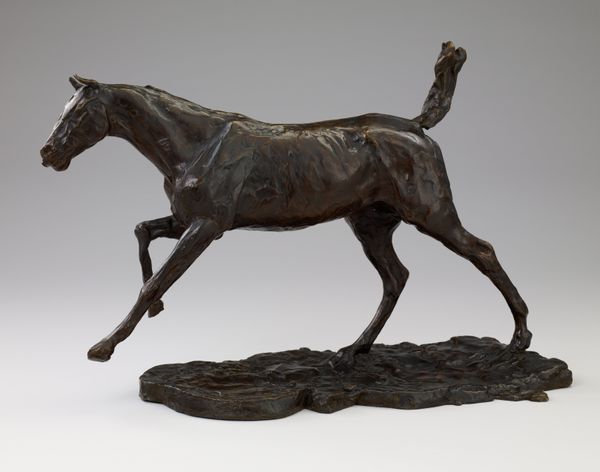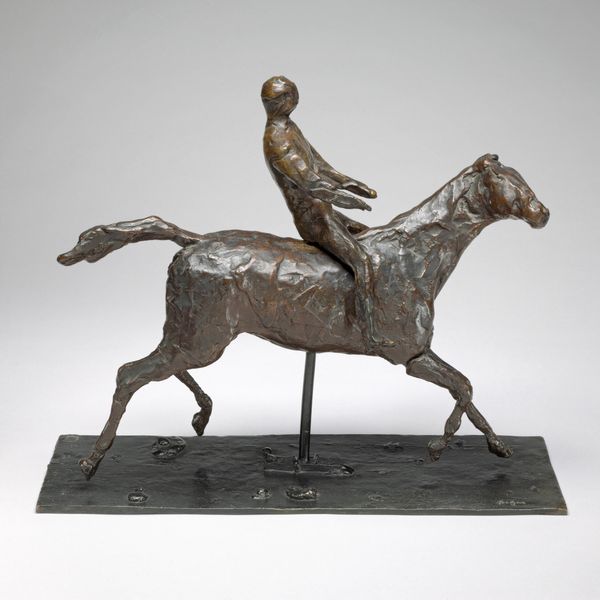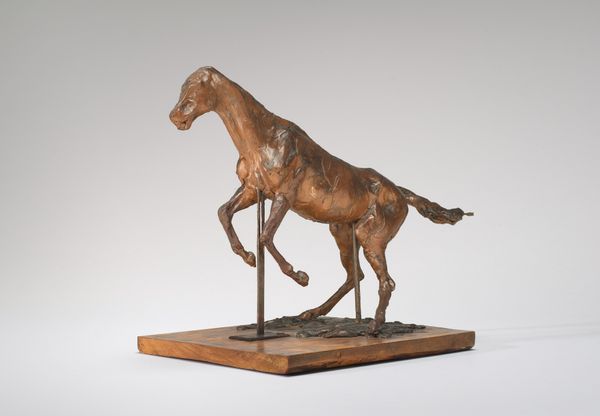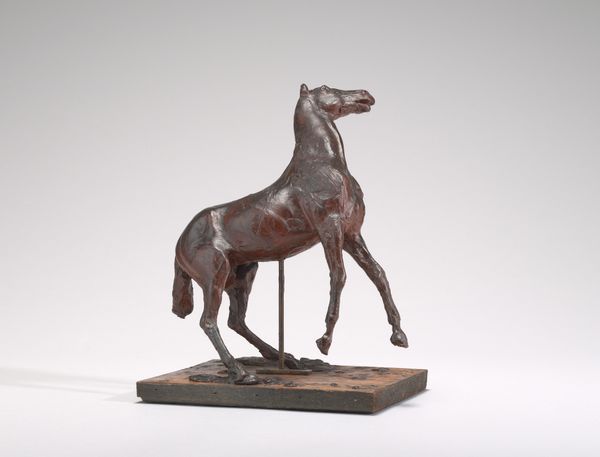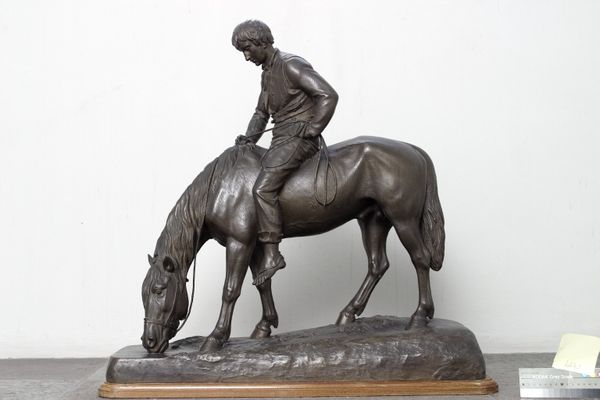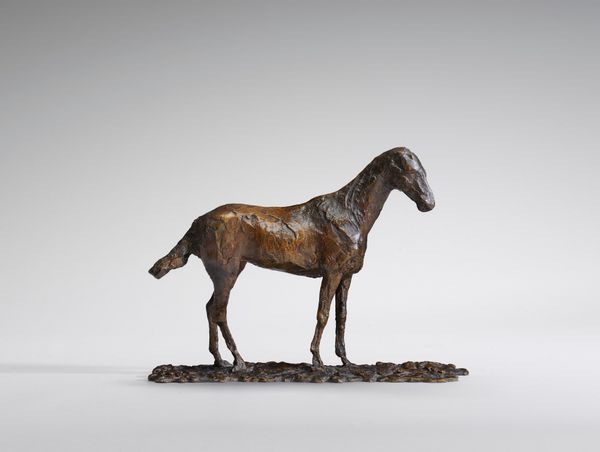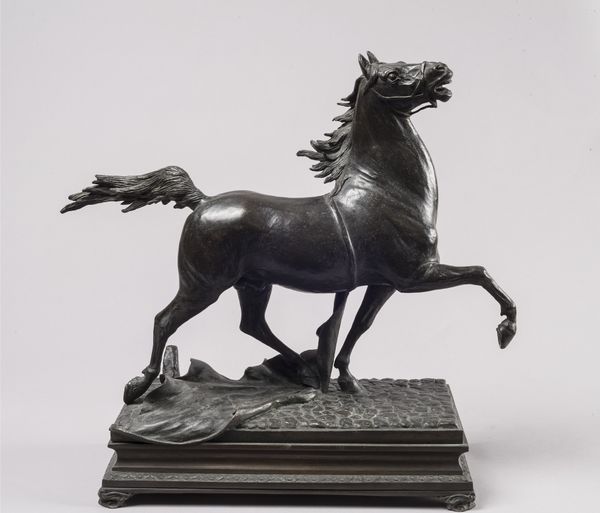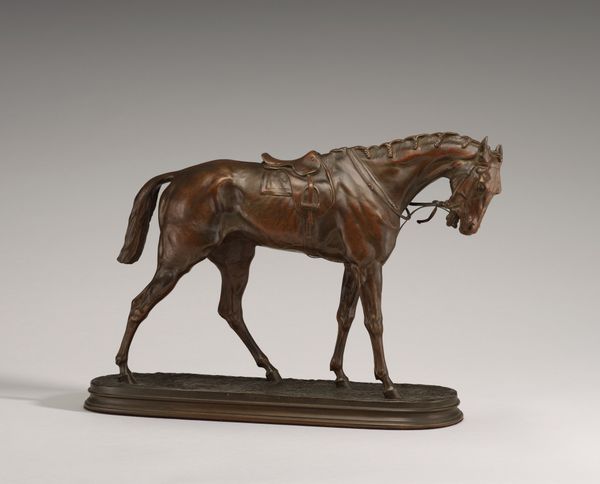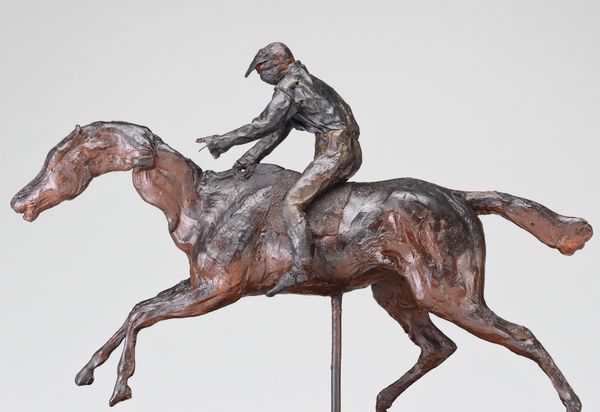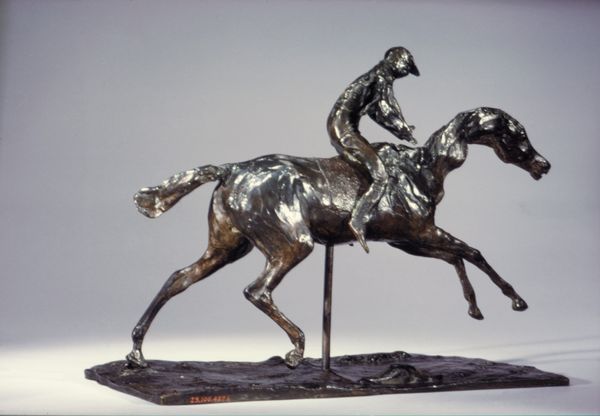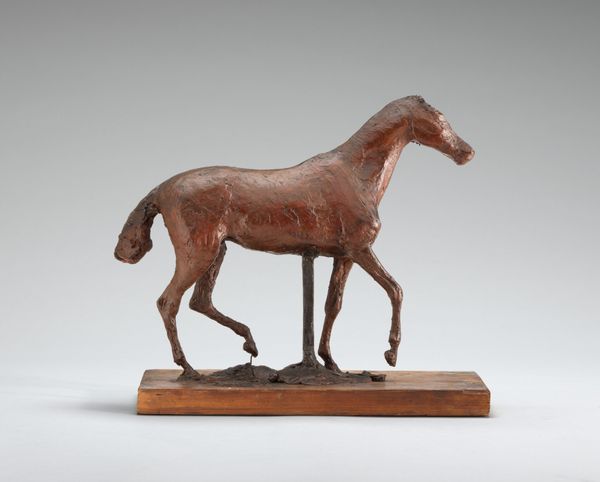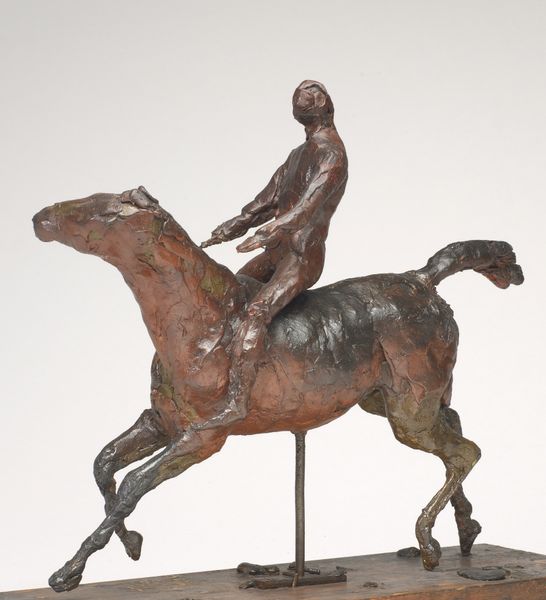
Dimensions: object: 1816 x 3886 x 673 mm
Copyright: © The estate of John Skeaping | CC-BY-NC-ND 4.0 DEED, Photo: Tate
Editor: This is John Skeaping's sculpture, "Horse", currently residing in the Tate. It's quite large, almost life-size. It makes me think about freedom and confinement. What do you see in this piece? Curator: It evokes the complex relationship between humans and animals, specifically, how power structures influence our perception and treatment of them. Consider the historical use of horses in warfare and labor; does the sculpture reflect this exploitation? Editor: I hadn't thought of it that way. It's a bit more nuanced than just freedom, I guess. Curator: Exactly. It prompts us to reflect on ethical responsibilities, forcing a deeper understanding of how we shape, and are shaped by, other beings. Editor: This gives a whole new meaning to the sculpture for me. Thanks! Curator: And thank you. It’s always interesting to consider art through a contemporary lens.
Comments
Join the conversation
Join millions of artists and users on Artera today and experience the ultimate creative platform.
tate 6 months ago
⋮
Skeaping was a sculptor of the human figure and of animals, particularly horses and antelopes. He constantly drew from animals, and became very familiar with their anatomy and their distinctive characteristics. In 1933, the year that Skeaping carved this horse, he also illustrated the 'Whipsnade Zoo Animal Book'. In 1936 he published a book entitled 'Animal Drawing' which was followed in 1941 by 'How to Draw Horses'. 'Horse' was purchased for Whipsnade Zoo in Bedfordshire in 1937 by a group of subscribers and it remained on view there until 1945 when it was presented to the Tate Gallery. Gallery label, September 2004
